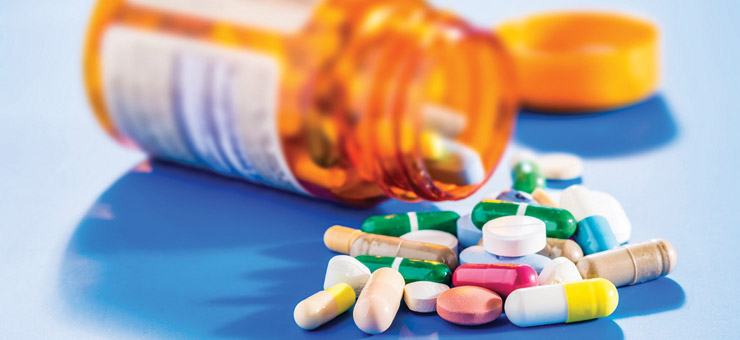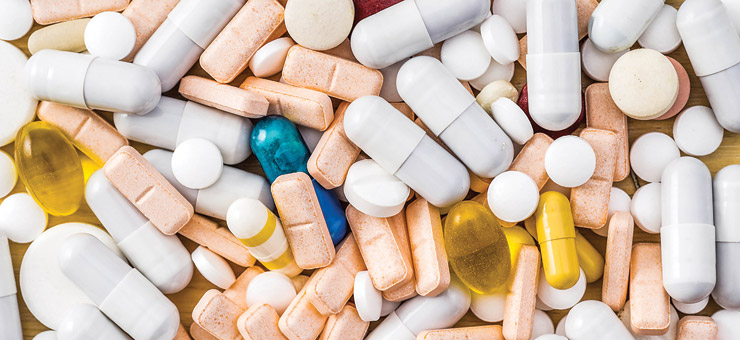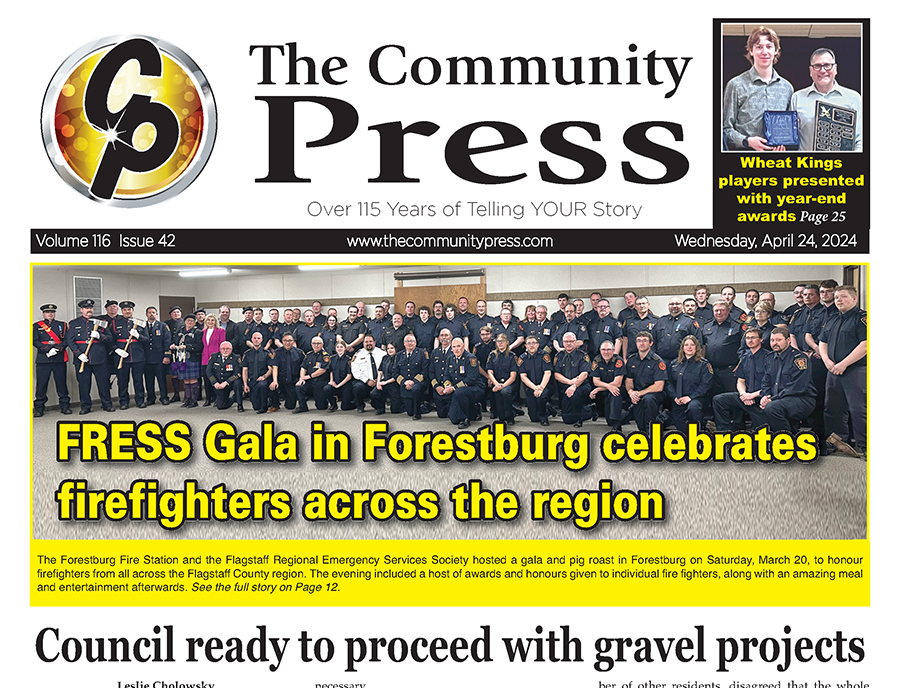Opioid awareness sessions informative and eye-opening

Three different groups of people in Flagstaff had the opportunity to learn more about Alberta’s opioid crisis, and more about street drugs and their effects through Opioid Awareness sessions sponsored by Flagstaff Initiative to Relationship and Spousal Trauma (FIRST) and the Rural Development Network.
Two staff members from Turning Point Society of Central Alberta were on hand in the informative sessions; Kiera, who works with Turning Point as an administrative assistance, and opioid awareness educator, and Tricia, an RN who also works with the organization in many roles, including education and awareness.
Turning Point works on the streets of Red Deer, responding to opioid crises on the street. The organization also offers overdose protection and MSM outreach programs, helping with gender identity, sexuality, HIV, Aids, Hepatitis C. “We help people to be safe and living the healthiest life they can. We acknowledge, we do not encourage, or enable harmful behavior.”
Harm reduction is aimed at minimizing behaviors that maximize dangerous, risky activities.
Kiera describes himself as, “A person with lived experience. For about a year, I was not housed, not employed, and had no relationships.”
Patricia says changes in how to handle the drugs on the streets needs to change. “Stronger policing as a drug strategy has a direct correlation to stronger, more available drugs.
“One in five people are estimated to be using illicit substances. It’s probably someone you know.”

Kiera says that reducing the stigma of addiction is an important first step. “I do everything that I can to convince others that the people who are dying are people, too.
“6,500 deaths in Canada over two years, all within 25 to 40 years old, means that if each of them had the potential of earning $2,000,000 in their lifetimes, that is $13,000,000,000 taken out of Canada’s economy.
“If numbers keep climbing, what else will it effect? Our tax base is a prime example.
“There will be a cost on survivors, a cost on children who grow up with one or no parents, with trauma, or with drug use.
“There is a cost of social care.
“We are looking at a terrifyingly volatile situation. That the number of deaths in the first four months of 2018 is historically at its highest is really frightening to me.”
Trauma and substance use often go hand in hand, especially for youth. Three main causes for using are abandonment or neglect; rejection; or feeling not good enough, not loveable. “This is especially hard for children to experience. It’s like being picked last for teams in school, where you are made to feel ‘less than’ the other players.”
Kiera says these issues wear on people’s sense of self.
“It happens, we’ve all experienced it. The feeling of not belonging, of being left out, has an affect on self esteem. Some people can turn to substances to ‘make that bad feeling go away’ for a little bit.”
He says alcohol, to some degree, is no different than other mind-altering substances in that regard.
Drugs are categorized into four main categories: hallucinogens, sedatives, stimulants, and opioids. Drugs are typically taken orally, intranasally-snorted, by inhalation-smoking, or by injection.
Patricia and Kiera touched on examples of each, including street names, side effects, and dangers, touching briefly on hallucinogens and sedatives. They warned multiple times of the dangers of consuming alcohol while taking drugs. Their talk focused more on stimulants and opioids.
Stimulants work to uplift the overall mood or increase energy. Stimulant drugs are cocaine, crack, crystal meth (methamphetamine), even energy drinks and caffeine fall into this category, Patricia says.
Overdoses of stimulants are called “over amping.”
Patricia says, “There’s nothing you can do to counteract the stimulant, all you can do is treat the symptoms.”

These can be irregular heartbeat, chest pain, shortness of breath, teeth grinding, involuntary muscle movement, seizures, heart attack, and stroke. “The best thing you can do is call 911.”
Overamping also can produce psychological effects like anxiety, panic, paranoia, and agitation.
“Why are stimulants so addictive? Use promotes euphoric feelings, and increase dopamine levels in the body.
“Drugs provide a huge dopamine rush,” says Kiera. “But the human body adapts, and decreases the amount of dopamine released over time.” Continued use drops that dopamine ‘rush’ down further and further he says.
“When dopamine levels drop, users have no motivation to do anything, but continue to use the drug, despite its detrimental effects on their lives.” And it can take two years to normalize dopamine levels in the body after stimulant use, he says.
Kiera says some doctors have started prescribing amphetamines to replace meth. “That way users are off dangerous street substances.” He says the cost of street drugs vs. prescription versions is far less expensive. “Cocaine costs around $100 for a gram, that’s good for about a 30-minute high, typically users will use $300 to $400 per day. Methamphetamine is around $60 for a gram that will last a series of days.
“At present, a month’s worth of prescription medication costs around $35.”
The final topic of the presentation was opioids. These include drugs like morphine, Percocet, codeine, fentanyl, oxycodone, and heroin, and even carfentanil.
“Fentanyl is 100 times stronger than morphine,” says Patricia. “Carfentanil is 100 times stronger than fentanyl. It is intended for use on large animals, it was never intended for human use. Even tiny amounts can kill.”
The pair say that fentanyl is a prolific street drug. “It relieves physical pain and mental and emotional pain.”
Patricia says, “Sometimes, for some people, life has just been really, really bad. People do horrible things to other people, to kids, and it can impact the choices they make about drugs.”
Fentanyl was created in the 60s, and was popular in the 90s for palliative care.
“Illicit fentanyl is 100 times stronger than morphine or heroine, but is the same price.

“A kilogram of fentanyl could be worth $13,000. With fentanyl, a dose the size of a grain of salt is enough to cause a “good high.”
“Two grains is enough for an overdose.”
The pair warn that street fentanyl is a very inconsistent product.
Kiera likened it to baking chocolate chip cookies.
“Sometimes one cookie has barely any chocolate chips, and another is full of them, there’s no consistency in how many chocolate chips are in each cookie.
“It’s the same with fentanyl manufactured for the street, it has inconsistent potency.”
Kiera, having gone through this himself, described it as, “It hurts when you breathe, and it lasts anywhere from two weeks to a month.” His withdrawal was in a safe place, medically supervised. He says, “I cannot imagine what it would be like to be street involved and go through this.”
It’s one of the strongest pulls to keep using. Users desperately need ‘the next hit’ to stop feeling sick, he says. “Often clients have no home, no safe place. They’re no longer using to get high, they are not partying; it’s not the good life.”
Because coming off opioids is so painful, drug programs have used methadone as an alternative for users since the 60’s. “It suppresses withdrawal symptoms and cravings,” Kiera says. “The dosage is adjusted so that users are taking just enough that they are not sick, but no more than that.”
There is hope for rural opioid users, in the form of the Rural Opioid Dependancy Program. This publicly funded program includes medication management and expert addiction counselling care. Kiera says, “Opioid addiction treatment is very effective. It helps reduce cravings and takes away withdrawal sickness.”
He says that rural doctors are being encouraged to get methadone and suboxone training.
Patricia says that from Jan. 1 to the end of May there were 228 drug related deaths in Alberta. Many of the accidental overdose deaths are related to fentanyl.
There were 583 drug-related deaths in 2017 in the province.
The pair talked about effective opioid-related death prevention, and their number one piece of advice was, “Don’t use alone.”
The symptom of opioid overdose are: reduced breathing, respiratory depression; pale, blue/grey skin, with nails, lips, and tongue turning blue or purple, and no reaction to pain stimulus. “That’s cause for a 911 call.”
Turning Point administers live-saving naloxone kits to anyone willing to carry and use them. Patricia says. “I would rather you have it if it is needed rather than sitting in my drawer.”
The crisis is so great that any person in Alberta can obtain a naloxone kit to help someone overdosing on opioids. This kit contains lifesaving opioid-blockers that may revive a person who is overdosing.
The kit also includes a breather mask that is used to provide safe, one-way air flow to the overdose victim.
Patricia says multiple doses are often needed, the average in their experience on the streets is between eight and 12 doses.
She says the “Good Samaritan Act,” protects anyone attempting to save a life from being charged with wrongdoing.
Naloxone has no adverse affects if a person is not suffering from an opioid overdose. If they are, it acts fairly quickly, within two to five minutes, and that time can be used to administer more air to the patient.
If still unresponsive, a second, third, fourth, twelfth dose can be given.
Once the naloxone starts to work, it only lasts for between 30 and 40 minutes, and so calling for professional medical help is a crucial first step.
Originally published in the August 1, 2018 edition of The Community Press. Call 780-385-6693 to reserve back-issues.
Never miss an issue – become a subscriber today! CLICK HERE!
Print is still the most effective medium. Attract LOCAL customers by supporting LOCAL media. ADVERTISE!
ads@thecommunitypress.com
Leslie Cholowsky
Editor







